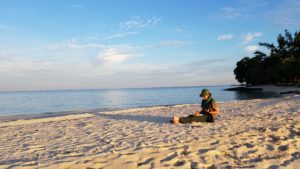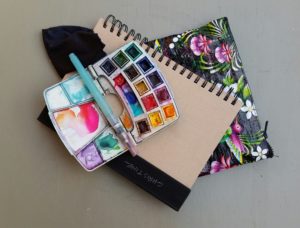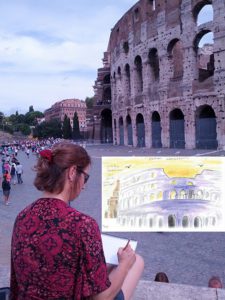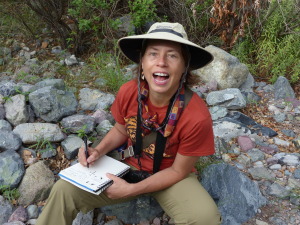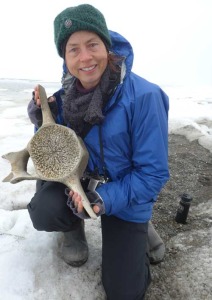Ok, we’re nearing the end of this challenge and I hope you’ve learned a lot! Now that we’ve covered all the bases, like essential art tools, foundational sketching skills and ideas for where and what to sketch, it’s time to ‘put a bow on it’ and actually get out in the field for a day of sketching! Are you ready?
If so, I’d like to share my best recommendations for equipment for a fun and safe adventure, whether you’re headed to a local park or off to a favorite vacation destination, you’ll be all set when you are well prepared.
Field Supply Recommendations
Depending upon how far afield you are venturing, your budget, and long-term goals for sketching, you may consider bringing the following with you on your next outdoor adventure:
- Art supplies. These may be as simple as a mechanical pencil and an unlined notebook, or a full-fledged kit, depending upon your favorite media. See this page of my website for my complete list and demo of art supplies I use.
- Equipment for observing your sketching subjects, such as binoculars, magnifying lens, insect observation boxes, mini plant press, field guides to the local flora and fauna, and a small camera or smartphone for photos and videos.For sketching nocturnal creatures, you may want a headlamp and a UV blacklight flashlight that can help you find glow-in-the-dark scorpions;
- If you are truly serious about comfort, try a foldable field chair (for example: Crazy Creek chair or Tripod chair), although I’ve never used one, some folks swear by them. If you become hooked on field sketching, especially of subjects like birds and landscapes, you might consider getting a spotting scope and tripod, which would run you around a grand for a quality set, but are well worth the price!
- Bringing water, snacks, first aid, sunscreen and bug spray is always a good idea. REI or another local outdoor store is a good bet for these supplies.
- If you are venturing more than a mile from a road, and especially if you are traveling alone, you might also consider emergency supplies such as fire-starting gear, a flashlight, a jacket, pepper spray and a whistle. Don’t rely solely on your smartphone to rescue you if you break your ankle!
Throw all your supplies into an across-the-shoulder bike messenger style bag or fanny pack. I use a Baggalini brand bag that is lightweight and relatively waterproof. Try to keep your artist’s bag at the door or in your car, so you’ll never regret being without it when there’s a cool wildlife sighting
Clothing Recommendations
If you are simply sketching in your backyard or a local park, wear whatever is most comfortable for you. However, if you plan longer, all-day hikes into the wilderness, or plan to sketch while traveling, I have some specific recommendations for you. I travel extensively for enjoyment, and, also as part of my work co-leading bird watching tours all over the western hemisphere in both cold and hot climates, so I am serious about my clothes – they must be durable and versatile.
I stick primarily with Patagonia and REI. Royal Robbins is also an excellent choice (especially their heritage styles line). Whatever company or brand you choose, the ideal clothing incorporates performance blend/synthetic fabrics that wick away moisture, dry quickly, resist wrinkles, are light weight, stretch, and have sun and insect-protection qualities. No cottons or wools! Modern synthetic fibers are the way to go. Preferably use long-sleeved shirts and long pants for protection against bugs, scratches, and sun. Layers are advised for a long day in the field with changeable weather.
I also prefer clothes with flexible styles that can be modified for field conditions at a moment’s notice– like zip-off pant legs, lots of big pockets with zippers or buttons, sleeves and legs that can be rolled up and secured, etc. Fabrics with subtle patterns that hide stains are also a plus and reduce laundry time.
As for women’s clothes, I prefer the more practical skort over a skirt, and dresses that use stretchable blend fabrics (these I use for sketching while traveling to historical, archaeological and religious sites, especially if there won’t be a chance to change before going out to dinner.)
Here’s my list of what I recommend wearing, from head to toe
- Wide-brimmed hat
- High-quality sunglasses with large lenses
- Handkerchief (used for a wide variety of things including as a hat or headband, around the neck, as a mouth screen against dust or insects, or around the wrist. You can dip it in water for a cooling effect, to clean your art supplies or as a food napkin. For more fascinating uses for a bandana, see this story on my website. )
- Short sleeved shirt, as an under layer
- Long sleeved shirt with pockets that close, as an outer layer
- Long pants, perhaps with zip off legs, with large pockets that close
- Shoes that are sturdy but lightweight for hiking, water resistant, and high-topped to protect your ankles
- For hot weather consider adding:
- A neck cooler filled with cooling polymer crystals
- A Buff (it’s an all-in-one bandana, ponytail holder, sun guard, scarf, hat, neck gaiter, and dust screen)
- A mosquito head net, jacket and/or pants (depending upon how much these little critters annoy you!)
- For cool weather consider adding:
- Warmer clothes overall, perhaps with water resistance
- Warm beanie, neck gaiter, ear warming headband
- Fingerless gloves or lightweight, flexible gloves to allow dexterity for sketching
- And to keep your hands extra warm for sketching, try some hand-warming packs!
- Windbreaker/rain jacket
Today’s challenge
- Make a list of where you’d like to go sketching in the field in the coming months and the equipment you’ll need, and make a wish list of what you’d like to purchase.
- Extra credit: Post your list, or a sketch from your day in the field on our Facebook page.
Show Your Support
If you are finding value in the lessons from this Nature Sketching Challenge, I invite you to consider donating funds to support me in the creation and ongoing improvement of this program. Even the smallest donation helps me to know that I’m providing lessons that inspire, entertain and educate you about the natural world.
Click the Paypal ‘Donate’ button below to donate any amount you wish. You do not need to have a Paypal account to donate, you may choose to use a credit card if you wish. Thank you!

